

|
|
|
|
#1
|
||||
|
||||
|
Xmods are very nice little cars. However, they do not compare with any type of competitive rc's because of their instability and inferior handling. Sure, xmods are very fast, but that is kind of worthless when it comes to racing on technical tracks and such. To be competitive, xmods must be carefully adjusted and modified. You can't just slap any upgrades on your xmod and call it a track car. Choosing the right setup is crucial.
So we begin: 1. Weight: a. Total weight: A carís tires can only provide so much grip. When the inertia of the car overcomes the available grip of the car, most of the time, the car becomes unstable. To eliminate excess weight, you have to look at the car and see what is not necessary for the car to run smoothly. An example would be your rear bodyclips. Another would be all the screws (there are so many doing the exact same job.) Just think of what would not be necessary and is not a critical part. Try not to remove things from the bottom of the car. Why? Because that would make the center of gravity rise higher and impact the handling of the car. b. Center of gravity: the point at which the car is balanced and can be moved in any orientation and it will just stay there. With track cars, the lower this is, the better the car will handle. The front/rear weight bias also heavily affects handling (especially at this tiny wheelbase). When trying to find the right distribution of weight, it's just trial and error. If your car: -understeers too much, move the battery tray forward to push weight over the front tires -oversteers too much, move battery tray back to push weight over the rear tires -flips, try to widen the car's "footprint" by using wider tires and wheels and lower the center of gravity. (wings also help somewhat). Another solution is to shave the interior of the car body and eliminate screws, excess plastic, etc. This takes away weight from the top of the car, so its center of gravity lowers dramatically. 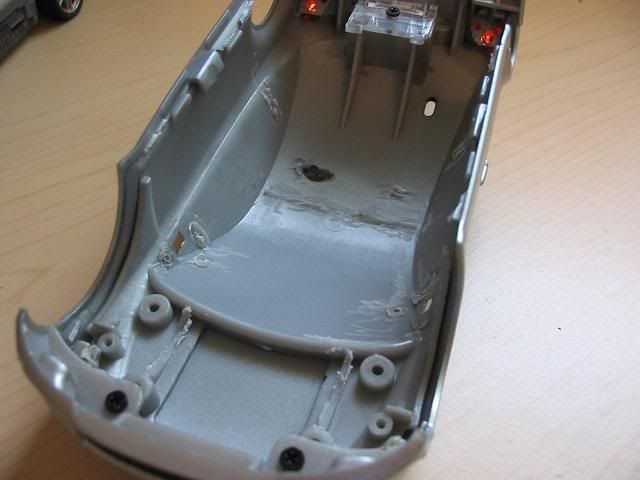 (one blaring source of excess plastic is the rear bodyclip. you can actually remove this and try the body mounting method shown below) 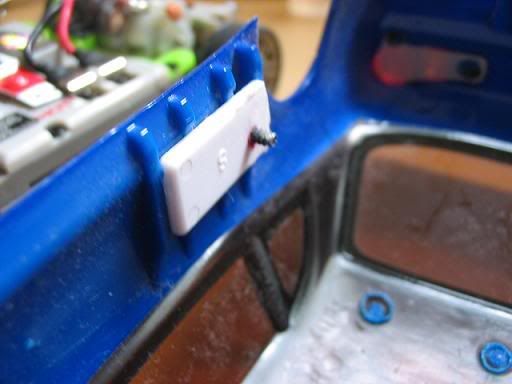 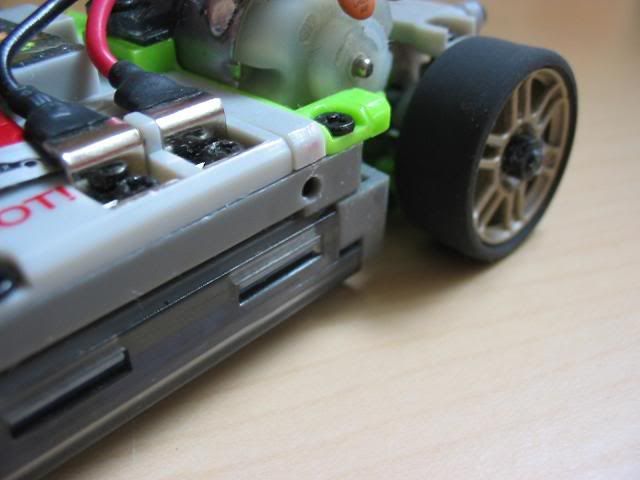 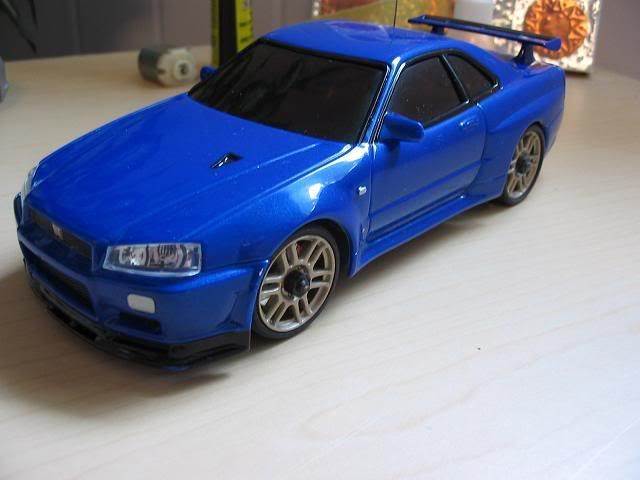 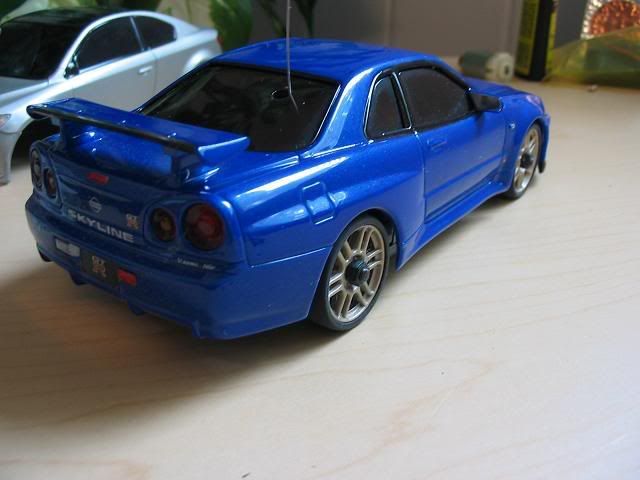 (BTW the credit for these pics goes to Kel who can drive a rwd xmod fast on a track) Lithium batteries often will increase the flip-risk. 2. Suspension and Steering: a. The springs and dampers: These are very important parts of the carís handling. RadioShackís springs are very stiff. The only ones that are practical for use with the xmod cars are the red ones. The others are just too stiff. The dampers are nice, but there are little burrs on them that catch on the springs when they compress, causing inconsistencies in the suspension. Shave these burrs off. There is no need for them even though people claim they hold the springs on. 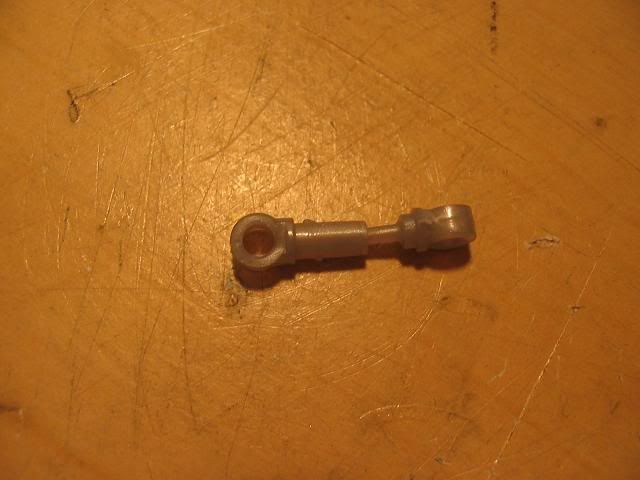 b. Damper positioning: Beleive it or not, the damper position affects handling. straight from mini-z racer forums: Quote:
b. Wheel wobble: one of the serious weaknesses to an xmod. The only real fix is to upgrade to open bearings (sealed bearings only if you use the open knuckle GPM). The open bearings have less resistance because thereís no shield to rub against both races of the bearing. The bearings eliminate about 80-90 percent of the wheel slop, allowing the car to be more precise and consistent. If you want absolutely no wobble, add the aluminum axle stubs. This will stop the wobble and what wobble is left would not have any effect. If your wheels themselves have wobble, then you should use aluminum lock nuts to hold them tighter to the axle stubs, or you can try the mod that is on this forum somewhere (I think you use some sort of glue and put it in the center D-hole and place the wheel on a spare driveshaft. When it dries itís supposed to be able to be slipped right off). The stock nuts donít hold very well, and donít keep the wheels from shifting side to side. Iíd go ridgeless here because aftermarket wheels have less slop. c. Steering slop: the stock tie rod and the upgrade tie rods all are very sloppy. Upgrade to aluminum if as soon as you can. The alloy tie rod will help the carís steering track straight and not drift to either side. Along with that, the slop within the servo gears can be remedied by using light gear grease or silicone grease on them. The slop will be mostly gone by the time you finish this modification. 3. Tires: not much to say here. Narrower tires allow sharper cornering while wider tires provide more grip. Thereís a point when wider becomes worse. Thatís when your car has trouble negotiating turns effectively and understeers like crazy (thatís if both front and rear tires are of the same softness). Tires increase in hardness as the tire degree goes up, so for example, a 15 degree tire is softer than a 25 degree tire. The front tires should not be wider than the rear tires. IMPORTANT NOTE: RadioShackís tires are not flat and true. It is best if you shave off the ridge on the wheel, mount the tire by tire-tape, and true the tire surface. Why do flat tires matter? Because it can then have a larger contact patch and will be more consistent on a track. The best thing to do though, is to upgrade to ridgeless and use mini-z tires. 4. Batteries: a. Alkaline: short runtime, low amperage, retains low CG. Retains stock battery tray. 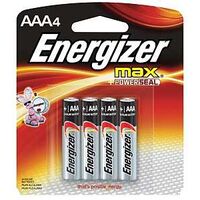 b. NiMH: longer runtimes, higher amperage, retains low CG, recommended. Can be found in matched cell packages. Many specifications available. Retains stock battery tray. 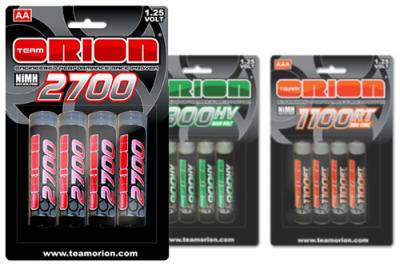 c. Lithium Ion: LONG runtimes, high amp, CG usually is raised, often requires special chassis. Lightweight. Usually sold as 7.2 volt battery packs with deans plugs. Cylindral cells, AA size most common, but AAA size is easy enough to find. Increases speed by about 75%  d. Lithium Polymer: LONG runtimes, Highest amperage, CG dramatically raised unless special chassis is used to lower the CG. Lightweight. Usually sold as a 7.2 volt battery pack with deans plugs. Thin rectangular cells. Increases speed by about 100%  5. Motors: a. motor cans: Ball bearing motor cans are recommended for racing because they are smoother than bushings, and they run cooler. Atomic: efficient, runs cool, quick change brushes, open endbell  M1: efficient, runs cool, adjustable brushes, high end modified endbell  PN/other bb cans: 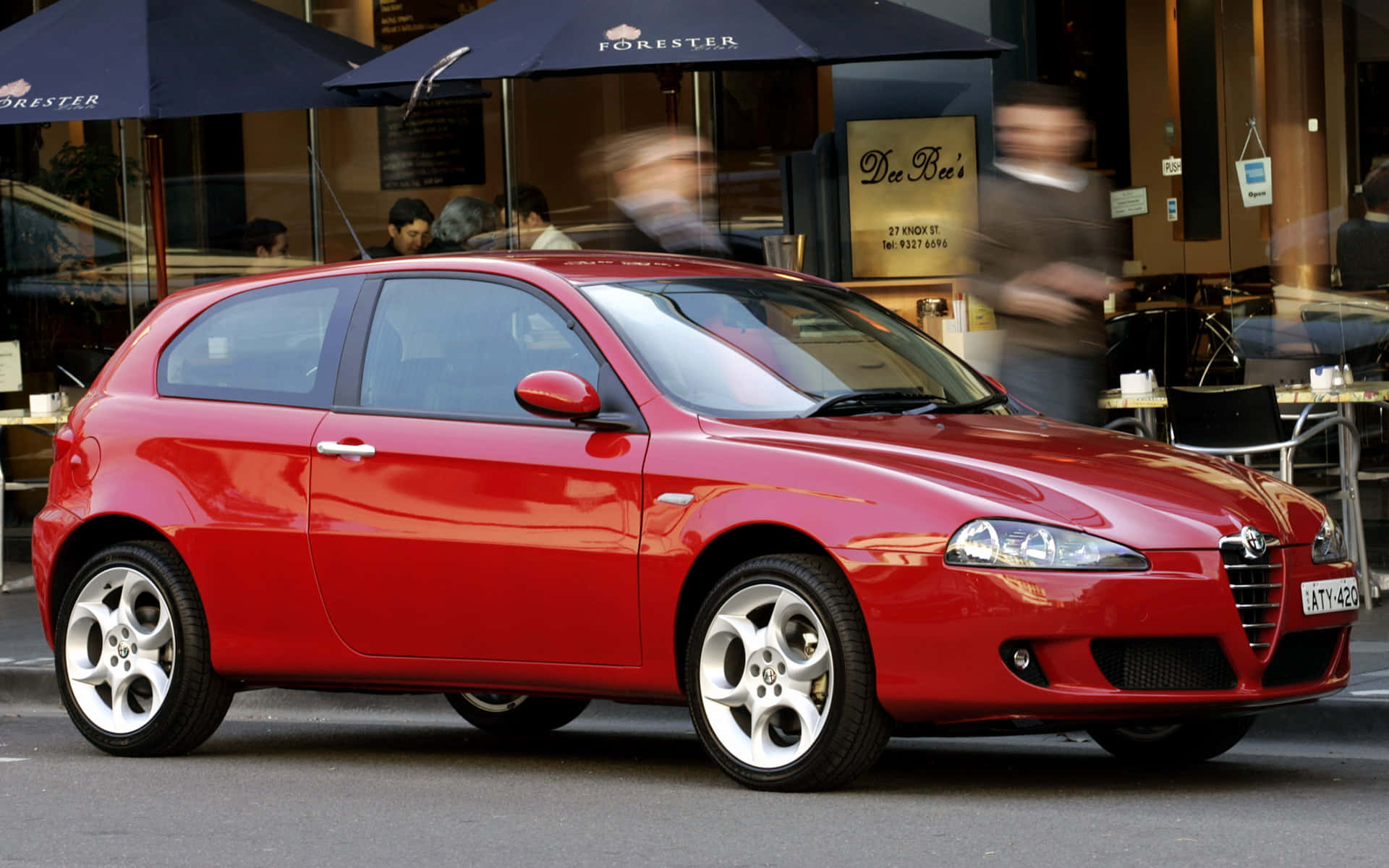 b. motor armatures: Do not try to go for topspeed. Acceleration is important. Under 35t is where your motor begins to become too fast to control on a tight track. On large wide tracks, higher speeds can be beneficial. c. motor brushes: Carbon brushes lubricate better, silver brushes conduct better. Using a hybrid setup with one silver brush and one carbon brush will improve response but retain lubrication. d. motor magnets: Neos are very high torque and can be clunky and rough. They are not smooth. Standard magnets are very smooth and still have reasonable torque. RS magnets are very weak, so they are the smoothest, but they lack much of the crucial torque. Use hybrid setups that combine two different magnet types to find the combination that suits you best 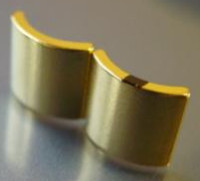 e. motor wiring: not very important. 20g is enough. 18g is overkill. 6. Electronics: a. Xmods electronics: Low control, no modification, glitching common, and remote is not very good  b. Mini-z electronics: the best, precise control, slight modification, very little glitching, available in 2.4 gHz ASF. Strong transmitter and fets 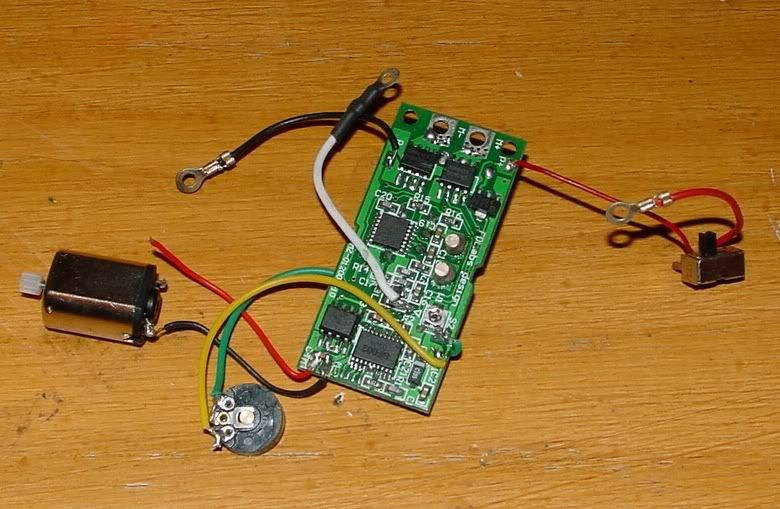 c. Iwaver/Firelap electronics: big improvement over xmods electronics, but less powerful than mini-z electronics. Equal precision and modification. Good transmitter and xmod quality fets. Slight glitching when distance becomes great. 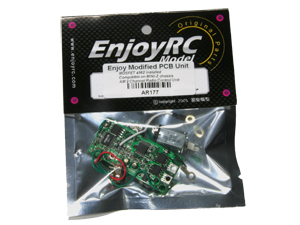 d. Radline electronics: great, but not easy to fit. e. Modular hobby grade electronics: very hard to fit into the chassis, heavy, very precise and no glitching. Strong transmitter 7. Drivetrain: a. AWD: high traction, moderately easy correction of driving error. Slows down car. Slightly tailhappy b. RWD: moderate traction, higher speed, requires more skill. Very tailhappy c. FWD: low traction, slow acceleration, extremely easy to control, low speed, very neutral handling. 8. Aerodynamics: a. Aerodynamics affects these cars when they travel above 10 mph. The air molecules are a bit larger in comparison to xmods, so aerodynamics has less effect than in a full size car, but it still works. b. Wings: these help keep the car from becoming squirrely in corners, and helps keep the rear in check. Use lexan or thin plastic wings. 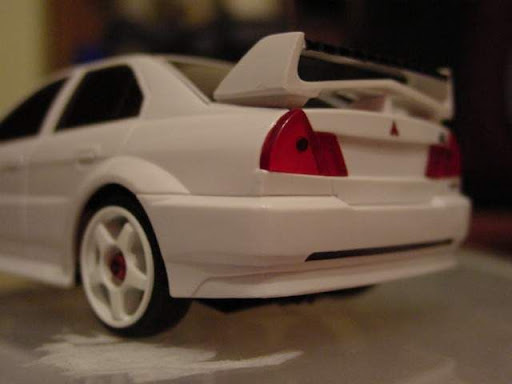 c. Bodies: certain bodies are more aerodynamic than others. Mini-z bodies are more aerodynamic than xmod bodies. They are thinner, lighter, and are smoother. They can be mounted by drilling a small hole in the side of the stock chassis and taking off the clips that mini-z bodies have on them. There will be a stile screw that can just pop into the little hole that was drilled in the side of the chassis. This eliminates the bulky and heavy rear clip, and allows more variety of bodies to be mounted. d. Taking off mirrors and having a lower body can help improve the aerodynamic properties of the bodyshell. e. Lexan bodies are very aerodynamic as well as durable and light. They remove weight from the top, so they are great for improving handling, and the paint wonít scratch because you paint it from the inside.  9. Chassis a. The stock chassis: reasonable rigidity. Slightly heavy, low CG. variable handling adjustment  b. Stiletto and similar chassis: light, relatively low CG but higher than stock, rigid. Handling varies by parts installed  c. DIYmod type chassis: high CG, flexible, durable, for scale appearance, loose handling, light d. SLRC and similar: light lower CG, rigid. Neutral handling with slight adjustment e. MRCG: RWD only. Light. Lowest CG, rigid. Neutral handling with adjustment  f. Sinister and similar: RWD only, light. very low CG, rigid, neutral handling with adjustment 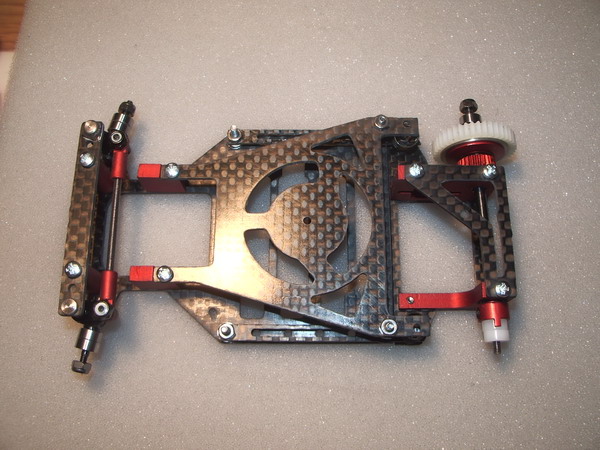
__________________

Last edited by XMDrifter; 11-15-2008 at 06:02 PM.. |
|
#3
|
||||
|
||||
|
Good guide, any chance for a gen 1 guide for us gen 1 junkies? As for the Mini-Z bodies being mounted, thats a clever idea. I might just try that for the loss of weight and sexy bodies!
EDIT: About the Mini-Z bodies stuff, forgot that only for Evo chassis, any chance of that mod being applied to the gen 1's? |
|
#4
|
||||
|
||||
|
Quote:
i suppose if you drilled holes in the battery straps and made the little pins and put them further forward on the body so that they'd be able to latch into the batt straps, it could work, but other than that i think that's it. Yay i got a sticky! EDIT: added a little blurb about the suspension positions.
__________________

Last edited by XMDrifter; 11-15-2008 at 06:03 PM.. |
|
#5
|
|||
|
|||
|
pretty awesome right up! Sticky this thing!
|
|
#7
|
||||
|
||||
|
Excellent write up. If you want, I'll send you some Gen 1 specs, or maybe let you borrow one of my CF chassis. We had this conversation for a near hour, you should try out some Tinyrc chassis. I'll show you em, they can make the difference.
__________________
Feel free to ask me anything Xmods related. Chances are I know the answer, or can tell you someone that does. Mercedes Track Car v2 (50% finished) : http://www.xmodsource.com/forum/showthread.php?t=18360 Comeback Supra Project (trust me tune in): http://www.xmodsource.com/forum/showthread.php?t=20546 |
|
#10
|
||||
|
||||
|
i've seent he tiny-rc chassis. they're kinda like the TGR but also a bit kinda like som other chassis i've seen.
no need to let me borrow a chassis, just send some specs or lots and lots of pictures
__________________

|
|
#12
|
||||
|
||||
|
We should re-label this the Evo Car Tuning guide.
__________________
After a thousand years of oppression,
Let the berserks rise again, Let the world hear these words once more: "Save us, oh lord, from the wrath of the Norsemen" |
|
#13
|
||||
|
||||
|
Quote:
I say put in (mostly Evo Car) Nice write up Xmdrift. I have looked at this a couple times for my track car v2.0. |
|
#14
|
||||
|
||||
|
Good write up but, the body thing makes no sense to me the material a body is made of does not affect the aerodynamics as far as I know. Example a brick will be just as aerodynamic as a lexan body shaped like a brick.
__________________

|
|
#15
|
||||
|
||||
|
It's about weight, reducing the weight up top lowers the center of gravity.
__________________
You know what I'm gonna do? I'm gonna get myself a 1967 Cadillac Eldorado convertible, hot pink, with whale
skin hubcaps and all leather cow interior and big brown baby seal eyes for headlights. Yeah! And I'm gonna drive around in that baby at 115 miles an hour, getting 1 mile per gallon. I may be king of the idiots, but my kingdom is vast and my subjects are everywhere |
|
#16
|
||||
|
||||
|
I understand that but, Im talking about him saying a lexan body is more aerodynamic than a xmod body if you take a plastic 350Z body and a lexan 350Z body and put them in a wind tunnel you will get the same results. The xmod body may weigh more but, that does not affect the aerodynamics.
__________________

Last edited by kungpow420; 03-30-2009 at 12:14 AM.. |
|
#19
|
||||
|
||||
|
For mounting do you need only one screw or should you use two? Also, what would be a good sized screw? How about the screws from the mirrors?
Last edited by Pwnzor1130; 03-30-2009 at 12:15 AM.. |
|
#20
|
||||
|
||||
|
I'll add my 2 cents for those who'll use aluminum parts- since the motor of an Evo is in the back, try to use more alum parts up front to even out the CG. I'd try alum front end and shocks or wheels and knucles. That should weigh enough over plastic to help center the weight completely. I'd also get a white Mini-Z body thats low and narrow to shave the weight and maybe cut the top of the glass off.
Oh and if anyone plans on getting a Z 2.4ghz board for an xmod- you're better off just getting a Z and enjoy its light weight, better handling/servo, etc since a whole Z chassis is only $130 and the 2.4 board is $90.
__________________

Last edited by Skv012a; 03-29-2009 at 11:51 PM.. |
 |
| Currently Active Users Viewing This Thread: 1 (0 members and 1 guests) | |
|
|